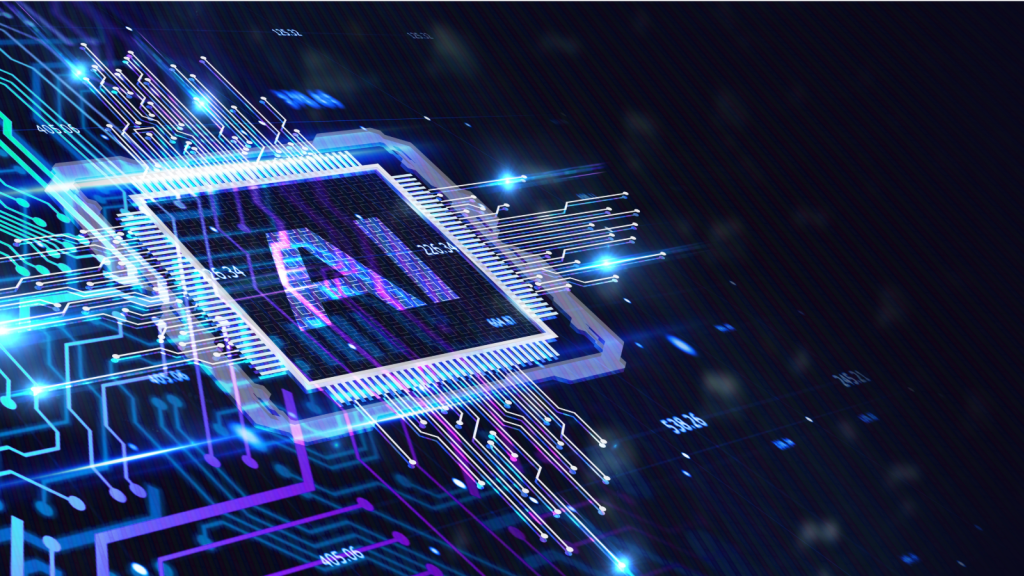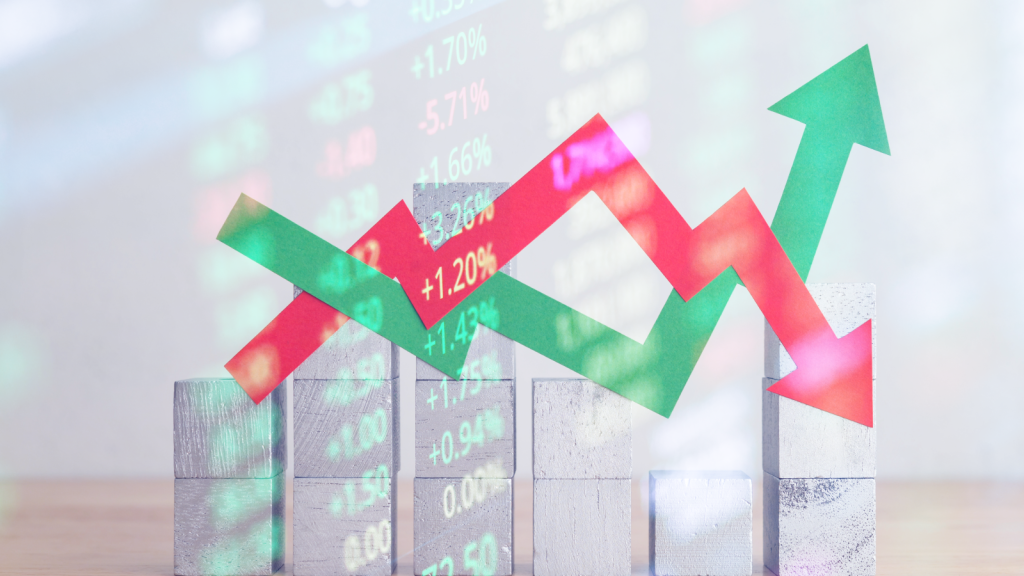Quantum’s “Transistor Moment” Is Arriving, so We’re Getting Our Portfolio Ready Now

In 1844, American inventor Samuel Morse transmitted the first long-distance telegraph from Washington, D.C., to Baltimore:
“What hath God wrought?”
Besides ushering in the age of instant long-distance communication, that message was also one of the first practical applications of electricity. This awesome power (considered an almost magical force for thousands of years) could now be used to send notes about your great aunt’s health.
Over the next century, scientists would dramatically improve our control over this power. Electricity went from brute-force tasks like pulsing messages along wires to finer ones, like transmitting video across the air.
But nothing could prepare the world for 1964, the year the MOSFET transistor was invented.
This “transistor moment” was a game changer. Suddenly, electricity could be used for computing… a task so complex that it had previously been the domain of mechanical contraptions the size of rooms. It was only a matter of time before we saw the first personal computer (1971), the first laptop (1981), and the World Wide Web (1989).
Investors who bought the right companies in this technological revolution became overnight millionaires.
We believe that quantum mechanics is about to have that same moment.
You see, quantum mechanics is a similarly confusing science. Like electricity, it’s:
- Usually invisible,
- Behaves in totally unintuitive ways,
- And has taken decades to understand.
And just like electricity in 1964, we’re now finally moving from using quantum mechanics in brute-force settings to the finely tuned ones that computing chips need.
It’s happening faster than anyone imagined.
In a special presentation later this week, InvestorPlace Senior Analyst Louis Navellier takes a brief break from market jitters to focus on a big-picture idea that he believes will change the world, much like the transistor did.
On March 20, during the company’s first ever “Quantum Day,” Nvidia Corp. (NVDA) may announce a new breakthrough technology that is poised to ignite the next phase of the AI supercycle
And one tiny small-cap company is positioned to be crucial to Nvidia’s Q Day reveal, thanks to its technology protected 102 patents.
So, on Thursday, March 13, at 1 p.m. Eastern, he’s holding a special time-sensitive briefing to get you ahead of the news. Click here to sign up for the free event.
I know this sounds like a lot. So, in this special Sunday InvestorPlace Digest, I (Tom Yeung) am going to:
- Introduce some of the basics of quantum computing,
- Explain why it’s so important to watch Louis’s presentation,
- And show how to invest your money in preparation for this tectonic shift.
Let’s start with the what of quantum mechanics:
What is it, and how does it work?
It’s Quantum Mechanics, Not Sorcery
In 1955, the cesium atomic clock became the first machine to rely on quantum mechanics.
Researchers used finely tuned microwaves to blast cesium atoms into a “superposition” state, where they are in more than one energy state at once (grounded and excited). The physicists converted the energy difference between these two quantum mechanical phases into oscillation periods, creating the second-long “pendulum” that remains the global standard for time today.
Essentially, quantum mechanics is the science that describes the behavior of atomic and subatomic particles. Physics can get very strange at a small size, and many of the “rules” that apply to our regular world simply do not when you shrink things small enough. For instance:
- Quantum tunneling. Particles can vanish when they hit an obstacle, only to reappear somewhere else
- Quantum entanglement. Photons (light particles) can influence each other, even if they are separated by miles of fiber optic cable.
- Quantum states. Atoms can “exist” in multiple states, much like the cesium atoms in an atomic clock. These states can even change simply by observing them.
- Electroluminescence. Excited electrons can release energy as photons, turning electricity into pure light.
Now, I know much of this seems very odd. Some of this might even sound entirely made up…
But let me be clear: Quantum mechanics is a real phenomenon that’s been known about since 1900. In fact, many common items already use these principles. MRIs… solar panels… and even the LED bulbs in your home rely on some form of quantum mechanics.
And now, the greatest prize is knocking at our doorstep.
One that’s going to change how we see the world.
And that’s because we’re on the verge of using the fantastical “magic” of quantum mechanics in computing.
So next, let’s consider why quantum computing is so important in the first place…
Bringing the “Quantum” Into Computing
The rationale for using quantum mechanics in computers is relatively straightforward:
Subatomic particles can do things that electricity simply cannot.
For instance, modern electrically powered computers run on “0”s and “1”s to store data and calculate outputs. It’s the same binary code we’ve used since the days of punch cards, and it makes certain calculations particularly time-consuming.
For instance, breaking an encryption key involves testing every possible combination, one by one, until the answer is found.
Meanwhile, quantum mechanics allow things to be “0” and “1” at once… and any number in between. A computer using quantum states could theoretically store far more data in a single place and perform calculations that a binary system can only dream of doing.
That same encryption key could theoretically be broken within seconds by a quantum computer because these machines could test thousands… if not millions…of password combinations all at once.
Or consider the physical limitations of modern microprocessors. Today’s chips are essentially billions of tiny grooves etched onto a semiconductor that channel electric charges from one place to another. (Think of a colony of ants delivering information through a maze of tunnels.)
We’re now reaching a point where these tiny grooves are becoming too small to conduct electricity. In other words, these tunnels are becoming too narrow for these “ants” (i.e., electrons) to squeeze through.
But what if we could harness the concepts of quantum tunneling or quantum entanglement? Under the right conditions, we could teleport “ants” straight to their destination… or even to an anthill halfway around the world.
That would shake the very foundation of computing itself (as well as create some very confused insects).
Where’s My Quantum Computer?
Of course, moving quantum physics into computers has proved challenging. The original cesium atomic clock required beaming microwaves at a “fountain” of cesium-133 atoms, and modern versions still require supercooled metal streams to be injected in a vacuum. You can’t etch that onto a microchip.
Even getting these atoms to “calculate” anything has been difficult. Atoms and subatomic particles have a habit of disappearing into their environment, and it took until 1998 for the first “quantum computer” to be built. (Even then, the experimental device could only keep track of its two carbon-13 atoms for several nanoseconds.)
One big breakthrough came in 1999 after a team of Japanese researchers discovered the “charge qubit,” an electric circuit with quantum mechanical properties. Below is a simplified electrical diagram of this concept. (The electrical engineers out there will quickly recognize it as a variation of an LC circuit that uses a capacitor/inductor combination to create an oscillation.)


Another innovation came in 2007 when researchers at Yale used several charge qubits to create the “Transmon qubit.” This new circuit protected qubits from outside charge noise, allowing them to be stored for usable periods. Below is a diagram of this more advanced idea.


Since then, innovation in quantum computing has accelerated.
In December 2024, Alphabet Inc. (GOOGL) stunned the world by launching a quantum processor named Willow with 105 transmon qubits. And in the past month, we’ve seen “quantum chip” announcements from Amazon.com Inc. (AMZN) and Microsoft Corp. (MSFT) claim similar advances.
It’s only a matter of time before these prototypes turn into a commercially viable product.
So, that brings us to the final question of this update…
Where are we now, and what should investors do next?
Where Quantum Computing Is Today
Today, the greatest challenge faced by quantum computing is fixing the errors produced by the fragile nature of qubits.
You see, environmental disturbances and other “noise” tend to produce errors in every few hundred quantum calculations. A single qubit might have a 1-in-500 chance of making an error, while a two-qubit system has a 2-in-500 chance rate, and so on. That means a 1,000-qubit chip would almost certainly make mistakes without error correction. (Most experts agree usable quantum chips will need several million qubits to be useful.)
Alphabet’s Willow is a leap forward because it uses qubits to monitor each other for errors. In theory, its 105-qubit chip can correct roughly three errors at once – a figure that should grow the more qubits you add.
Microsoft and Amazon are also exploring other types of qubits that may someday surpass transmons. The former is exploring “topological qubits,” a mesh that can store quantum information on its surface. That would make it exceedingly easy to scale, because adding more qubits can be done by simply adding more surface area. The latter is using “cat qubits,” which use microwaves to keep qubits in a suspended state.
These efforts are much like those at Bell Labs in the 1950s and 1960s that turned the original 1947 transistor prototype into usable “MOSFET” chips. No one quite knew which approach would work.
But once they discovered them, MOSFET chips quickly took over. They remain the backbone of every modern microprocessor today.
Now, Wall Street legend Louis Navellier believes he’s found the “Bell Labs” of quantum computing.
Or rather… it’s two companies that could end up working together to produce the first-ever commercially viable quantum chip.
The first is Nvidia Corp. (NVDA), a firm that realizes it faces an existential threat from quantum computers.
Quantum chips could become supremely good at breaking encryption… solve protein folding… and perform hundreds of other tasks that MOSFET-based chips struggle with. Nvidia’s management realize they need to end up on the right side of history.
The second company is a tiny firm that Louis will reveal in his exclusive presentation on Thursday, March 13, at 1 p.m. ET (reserve your spot here).
This startup is working on the bleeding edge of one of the qubit technologies I mentioned above. And Louis believes it just might become the next Bell Labs of the Quantum Age.
But investors can’t wait long to get in on the ground floor. While Wall Street is losing sleep over the latest tariff news, this innovative firm is pushing ahead with creating the world’s next “transistor moment.”
Reserve your seat for Louis’s free event by clicking here.
Until next week,
Thomas Yeung
Markets Analyst, InvestorPlace



























